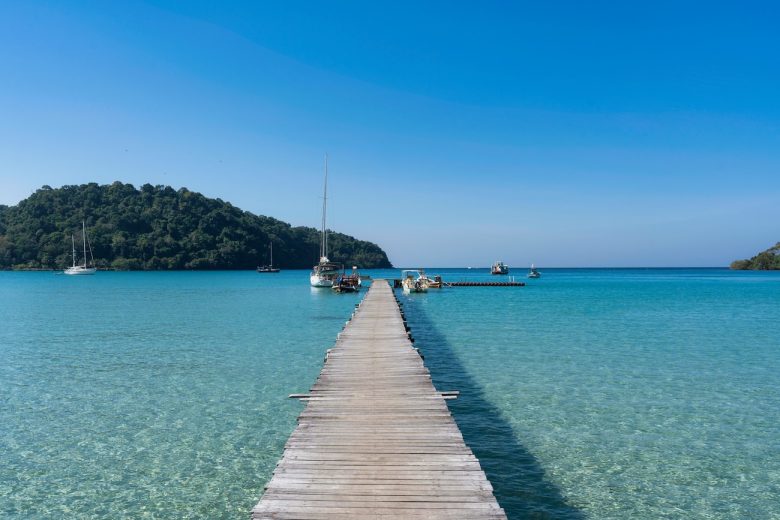
Koh Kood is one of many paradise islands you can visit in Thailand. What sets it apart from the rest is that, in addition to its idyllic beaches and lush natural surroundings, it remains relatively undiscovered and minimally developed for tourism.
This guarantees a unique experience. There are few tourists, and even during the high season, you won’t find crowded beaches. Koh Kood offers a peaceful atmosphere where you can enjoy picture-perfect beaches almost entirely to yourself.
Located in the Gulf of Thailand, near Koh Chang and the Cambodian border, Koh Kood is Thailand’s fourth-largest island, though much of it is covered in dense jungle. As a result, inhabited and road-connected areas are relatively close together, allowing you to explore the island without having to travel far.
In this post, you’ll find everything you need to know to visit Koh Kood, what to do and see, along with practical tips to make your trip as enjoyable as possible.
Best Things to Do in Koh Kood
1. Cool Off in Beautiful Waterfalls

Koh Kood’s mountainous terrain is home to stunning waterfalls that form freshwater pools perfect for swimming, especially during the rainy season.
There are three main waterfalls worth visiting. If you only have time for one, I recommend Klong Chao.
- Klong Chao
The island’s most famous waterfall, located on the northwest coast, has three levels and a deep natural pool — ideal for a refreshing swim in a jungle setting. It’s also easy to access, just a 10-minute walk from the parking area.
- Klong Yai Kee
Hidden in the lush tropical forest, this waterfall offers a tranquil setting and natural pools perfect for a peaceful swim.
- Huang Nam Keaw
Deeper inland, this lesser-known waterfall features multiple cascades tumbling over giant rocks and a small pool at the top. It’s harder to reach but absolutely worth the effort.
Visiting these waterfalls is undoubtedly one of the top experiences on the island.
2. Show Respect for the Venerable Giant Trees

The true temple of Koh Kood is its ancient jungle. Within it stand colossal trees revered by the local community for their spiritual and ecological significance, particularly the Saiyai and Makayuk trees, believed to be over 500 years old.
- Saiyai is a massive banyan tree with sprawling aerial roots, often wrapped in saffron cloth and adorned with offerings. It’s easily accessible from the road.
- Makayuk is also nearby and requires only a short walk to reach. The surrounding forest is thick with wildlife and mosquitoes (bring repellent!).
The trunk of the Makayuk tree is so large it takes several people to encircle it. Locals call it the “Guardian of Time,” and it’s usually wrapped in colorful fabrics as a mark of respect.
3. Experience Traditional Life in Ao Salat

Located on the northeastern coast, Ao Salat is the island’s main gateway, where ferries from Trat and Koh Chang dock. The village is built on stilts over the water and retains a traditional, slow-paced way of life, home to both Thai and Cambodian residents.
There are no souvenir shops or large-scale tourist services — just a few family homes and small seafood restaurants.
You can also visit a nearby Buddhist temple in the hills, presided over by a golden Buddha statue about 20 meters tall visible from the boat as you arrive.
4. Enjoy Paradise Beaches
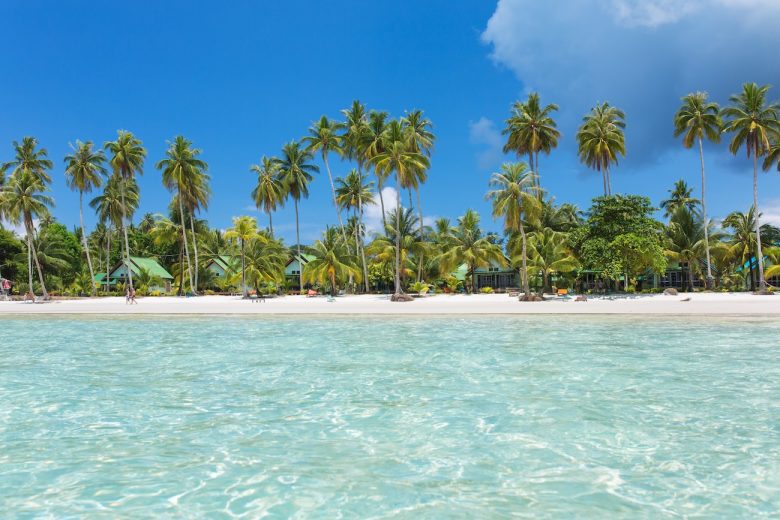
One of the top reasons to visit Koh Kood is its stunning, often-empty beaches, among the best in Thailand.
Most are located on the west and south coasts; the east is inaccessible by land. These beaches are known for white sand, crystal-clear turquoise waters, and peaceful surroundings.
- Klong Chao Beach is the most popular, with resorts, restaurants, and shops. It also features a mangrove swamp at its northern end, perfect for kayaking.
- Bang Bao Beach, to the south, is a beautiful crescent-shaped bay ideal for swimming and snorkeling.
- Ao Tapao Beach, in the north, is one of the largest and quietest. Its waters are crystal-clear and perfect for relaxing. There are a few boutique resorts and rocky areas good for snorkeling.
Further south, wild and pristine beaches like Ao Takhian, Khlong Hin, Ao Jark, and Ao Phrao are also worth discovering. Check out this post about the best beaches in Koh Kood.
5. Savor Fresh Seafood in Ao Yai

On the rugged east coast lies Ban Ao Yai, a charming fishing village built on stilts over the sea like Ao Salat. Life here is tranquil and rooted in tradition.
It’s also one of the best places on the island to enjoy fresh seafood fishermen bring in daily.
Don’t miss a meal at a family-run restaurant built over the water. The most famous is Nucci Seafood Restaurant, known for excellent quality at reasonable prices.
Before descending into the village, stop at the nearby viewpoint for a panoramic look at Ao Yai Bay and its picturesque surroundings.
6. Explore the Mangroves by Kayak
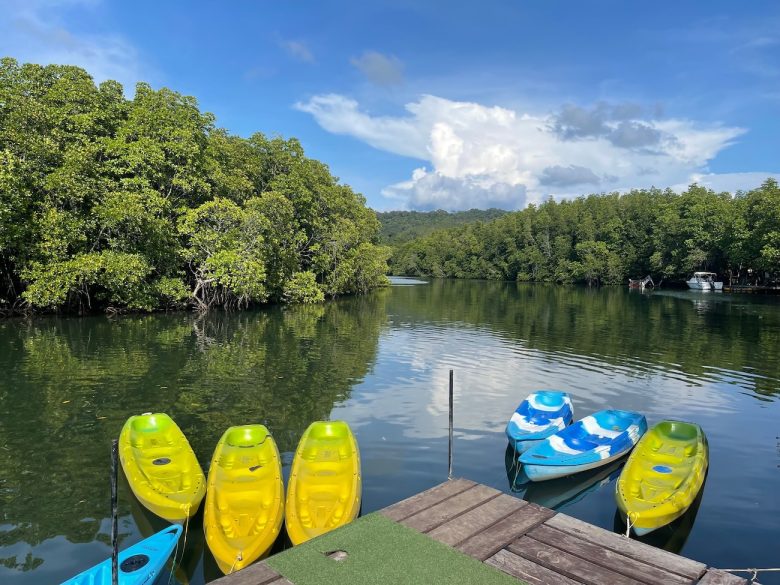
Paddling through Koh Kood’s mangroves is one of the island’s most fascinating and peaceful experiences.
The Khlong Chao River is ideal for kayaking, with tunnels of mangrove roots, herons, jumping fish, and even lizards among the trees.
Khlong Yai Kee Beach also offers kayak access to mangrove areas.
7. Explore the Island by Motorbike

The best way to get around Koh Kood is by renting a motorbike. Public transport is limited to shared Songthaew taxis, which are suitable for getting to/from the pier but impractical for exploring.
With a motorbike, you can roam freely, discovering waterfalls, villages, and hidden beaches. Unlike other islands, Koh Kood’s roads are in good condition, with minimal traffic and no steep hills.
Motorbike rental is easy and affordable (250–350 baht per day), and many resorts rent them directly. Don’t forget to bring an international driving license.
8. Snorkeling and Diving in Clear, Fish-Filled Waters

Koh Kood offers excellent snorkeling and diving opportunities.
- Snorkeling trips visit reefs near Koh Raet and Koh Rang, a marine park rich in coral and tropical fish. Other good spots include Bang Bao Bay and Ao Yai Kae.
- Diving is possible off both coasts. Bang Bao Beach is great for beginners, with calm, shallow waters. Near Ao Salat and Ao Yai, rocky formations offer great seabed exploration.
Koh Raet, off Klong Yai Kee, offers dives up to 14 meters. For the best visibility and biodiversity, dive boats head to Koh Rang, the area’s top site.
9. Visit the Iconic Khao Ruearab (Battleship Mountain)

Located behind Ngamkho Beach, Khao Ruearab, or “Battleship Mountain,” resembles a trio of warships. It’s a spiritually significant site, home to a small shrine and a statue of the Prince of Chumphon, a revered figure in Thai naval history.
Nearby, you’ll find a century-old tree, a Buddha statue in a pavilion, and caves with stalagmites and ancient pottery. The site is accessible by motorbike.
10. Meditate at Rat Bamrung Temple
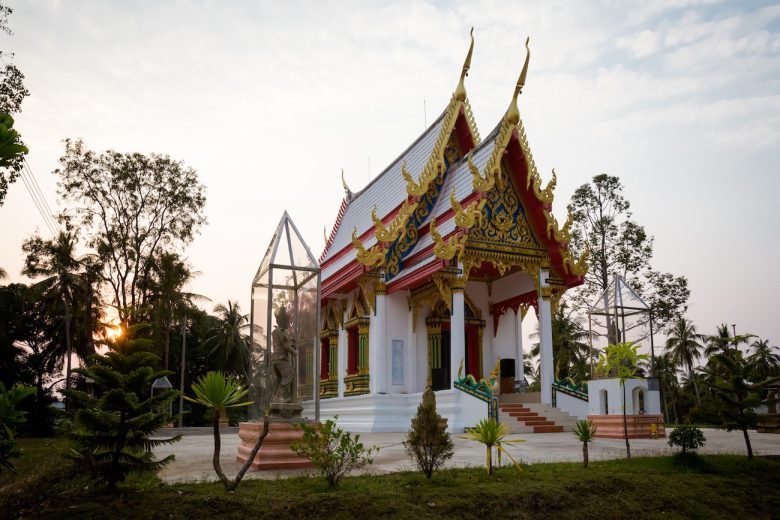
Wat Rat Bamrung is Koh Kood’s main Buddhist temple, located in a peaceful forest setting on the west side of the island. Though modest, it’s an active temple and spiritual center for locals.
The traditional Thai-style hall features murals, Buddha figures, and the signature curved roofs. A white stupa and small gardens add to the serene atmosphere — ideal for meditation.
Practical Tips for Visiting Koh Kood
1. Best Time to Visit
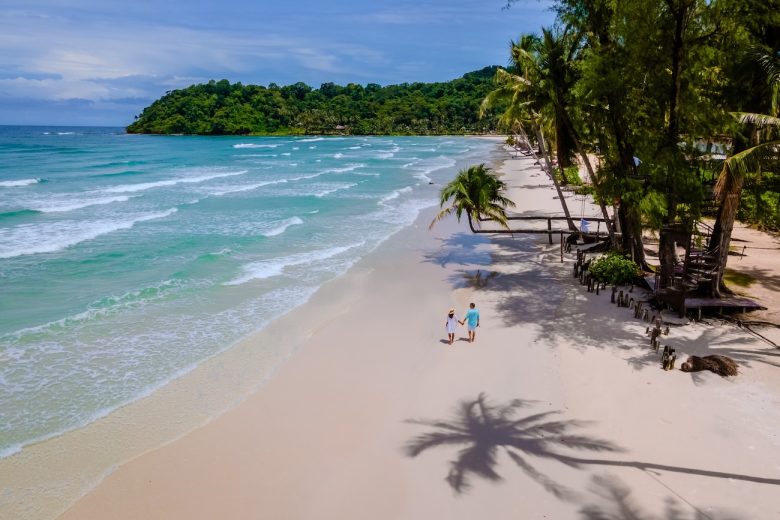
The best time to visit is during the dry season (November–April), when the weather is sunny and the sea calm. December to February is cooler and ideal for outdoor activities — but it’s also peak season, so prices are higher.
April is less crowded and still offers great weather.
The rainy season (May–October) brings heavy rainfall and fewer transport options. Some accommodations close entirely.
2. Getting to Koh Kood
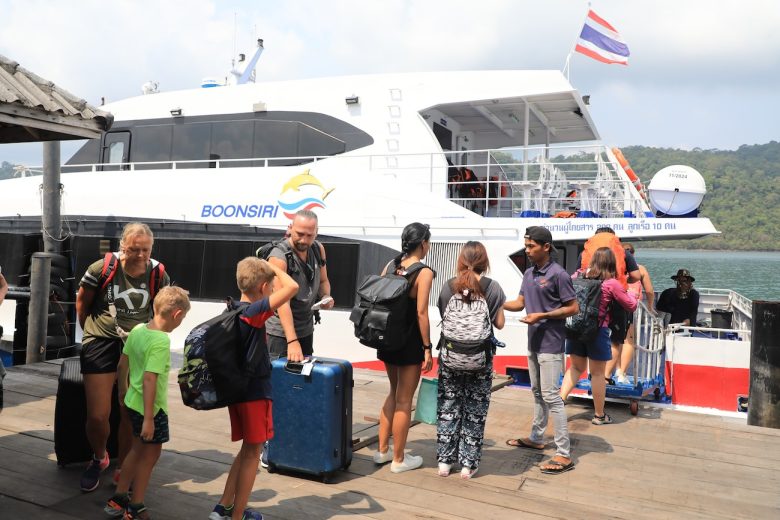
From Bangkok, the fastest route is flying to Trat Airport, then transferring to Laem Sok Pier for a ferry or speedboat (1–2 hours). You can purchase ticket from Trat Airport to Koh Kood in advance online.
You can also take a bus or minivan (5–6 hours) to Trat, then continue to the pier. Combined tickets for land and sea travel are available.
You can also reach Koh Kood from Koh Chang or Koh Mak by ferry during the dry season.
3. Getting Around
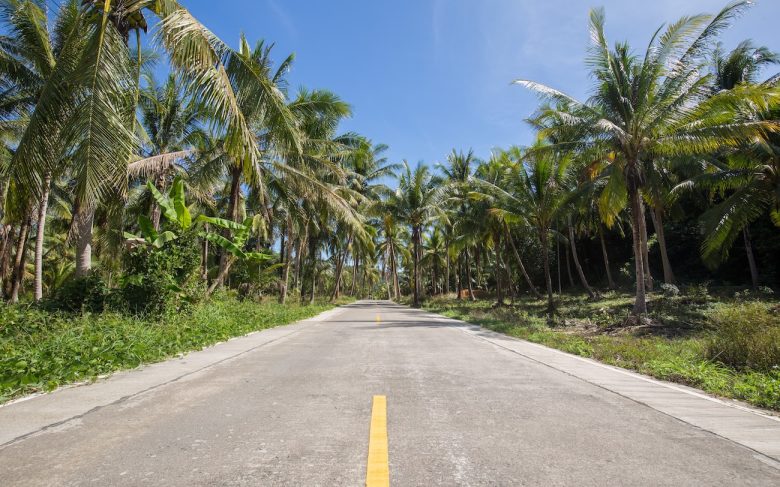
Motorbikes are the best way to explore the island. Roads are good, and traffic is light. Carry an international driving permit and be cautious, especially in remote areas.
Fuel is available at roadside stands and small shops.
Songthaews are available for fixed routes but lack a timetable. Bicycles are another option for short distances if you’re in good shape.
4. Money and Shopping
Cash is essential. Many places do not accept cards, and ATMs are scarce. Foreign card payments may incur a 3% surcharge.
Shops are small and local — don’t expect supermarkets. Bring essentials and medications, as options are limited.
5. Accommodation and Services

Koh Kood’s infrastructure is limited, so services may be basic. Accommodation is pricier than on other Thai islands but ranges from budget bungalows to luxury resorts. Book well in advance during high season.
Most mid-range and high-end hotels and resorts are located directly on the sea. At the same time, the more affordable options are typically situated away from the beach, towards the island’s interior.
However, during the high season (November to April), it is highly recommended to book well in advance, especially if you are seeking beachfront resort accommodations. Many accommodations fill up quickly at this time.
Some of the most popular and recommended resorts are:
- Koh Kood Paradise Beach
- High Season Pool Villa & Spa
- Tinkerbell Resort @ Koh Kood
- Tolani Resort Koh Kood
- Shantaa Resort, Kohkood
- Koh Kood Resort
- The Beach Natural Resort Koh Kood
6. Health Advice
A small hospital near Ao Tapao Beach can handle minor cases. For serious issues, transfer to Trat is necessary. Get travel insurance and bring any required medication.
Drink only bottled water and use insect repellent — mosquitoes are common, especially at dusk. Also, don’t forget high-SPF sunscreen for beach days.